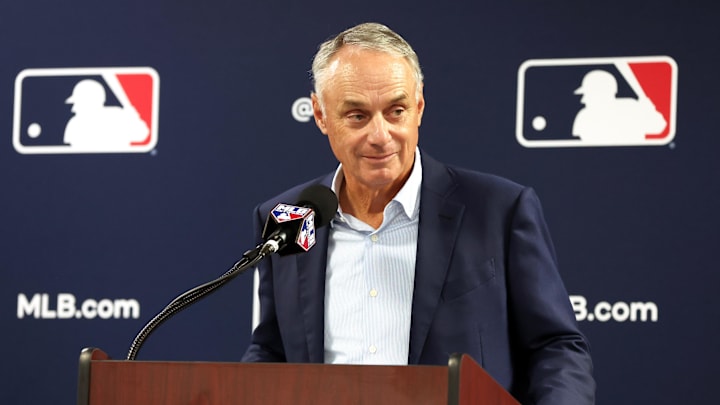The 2024 MLB postseason has been full of surprises, with several teams breaking through barriers. The Detroit Tigers made their first playoff appearance in a decade, the New York Mets are riding an incredible hot streak, and the Kansas City Royals pulled off a stunning upset over the Baltimore Orioles, which still haven’t won a playoff game since 2013. While there has been some dissatisfaction with the current playoff format—particularly regarding the top-seeded teams receiving byes into the League Division Series (LDS)—MLB senior analyst Jeff Passan defended the system:
“Three of the four teams that got byes advanced to the championship series. Having a bye—and the five days off to rest and reset that accompany it—is a good thing. Don’t let anyone try to convince you otherwise," Passan wrote.
MLB Postseason format is fine as is
The Los Angeles Dodgers, New York Yankees, and Cleveland Guardians all advanced to their respective League Championship Series (LCS), leaving the Philadelphia Phillies as the only team eliminated in the LDS after falling to the Mets 3-1 in their series. The current playoff format, introduced in 2022, gives higher-seeded teams an extended break before their next series, which can be both a blessing and a curse. Resting and preparing can be an advantage, but it can also disrupt momentum, as some argue that prolonged time off can make teams lose their edge.
In the 2023 postseason, however, the trend was reversed: three out of the four top-seeded teams with byes made it to the LCS, suggesting that the rest period may, in fact, be more of a benefit. This contrasts with the 2022 postseason when only two of the four top seeds advanced, with many debating whether time off or maintaining momentum was more crucial for success.
One aspect of the playoff format that continues to stir debate is the revamped Wild Card round. The new best-of-three format replaced the high-stakes single-game elimination, theoretically giving fans more games and more chances for upsets. However, in the past three seasons, every team that won Game 1 of the Wild Card series has gone on to win the series. This pattern raises concerns that, despite the switch, the series can still be decided in just one game.
MLB Wild Card format may still need some work
The previous single-game Wild Card format was known for its thrilling intensity, where the stakes were at their highest for one night, and teams had to rely on their ace pitchers to win and advance. The excitement and tension were palpable, with every pitch and at-bat carrying massive implications. The current format, however, has lost some of that magic. While the extended series allows for more playoff baseball and potentially more revenue for MLB, the early results often feel like a foregone conclusion after Game 1, draining some of the drama from the spectacle.
Rob Manfred’s decision to expand the Wild Card round likely focuses on increasing league revenues through higher attendance, television ratings, and merchandise sales. However, this approach has created some logistical issues. Games are being scheduled at times when many fans are at work, limiting attendance and viewership. For instance, during the 2023 Wild Card round, the Tampa Bay Rays played in front of fewer than 20,000 fans at Tropicana Field—an indoor stadium with a capacity of over 42,000. It marked the lowest attendance for a postseason game in over a century.
While the current format brings more games and more chances for fans to watch their teams in action, it may be time to reconsider the Wild Card structure. The one-game Wild Card format had a level of intensity and excitement that the current three-game series has struggled to replicate. Though it brought fewer games, it provided an electrifying do-or-die atmosphere that often elevated baseball’s postseason drama. Balancing the need for increased revenue with maintaining the integrity and thrill of the playoffs remains a challenge for the league as they fine-tune their format.
